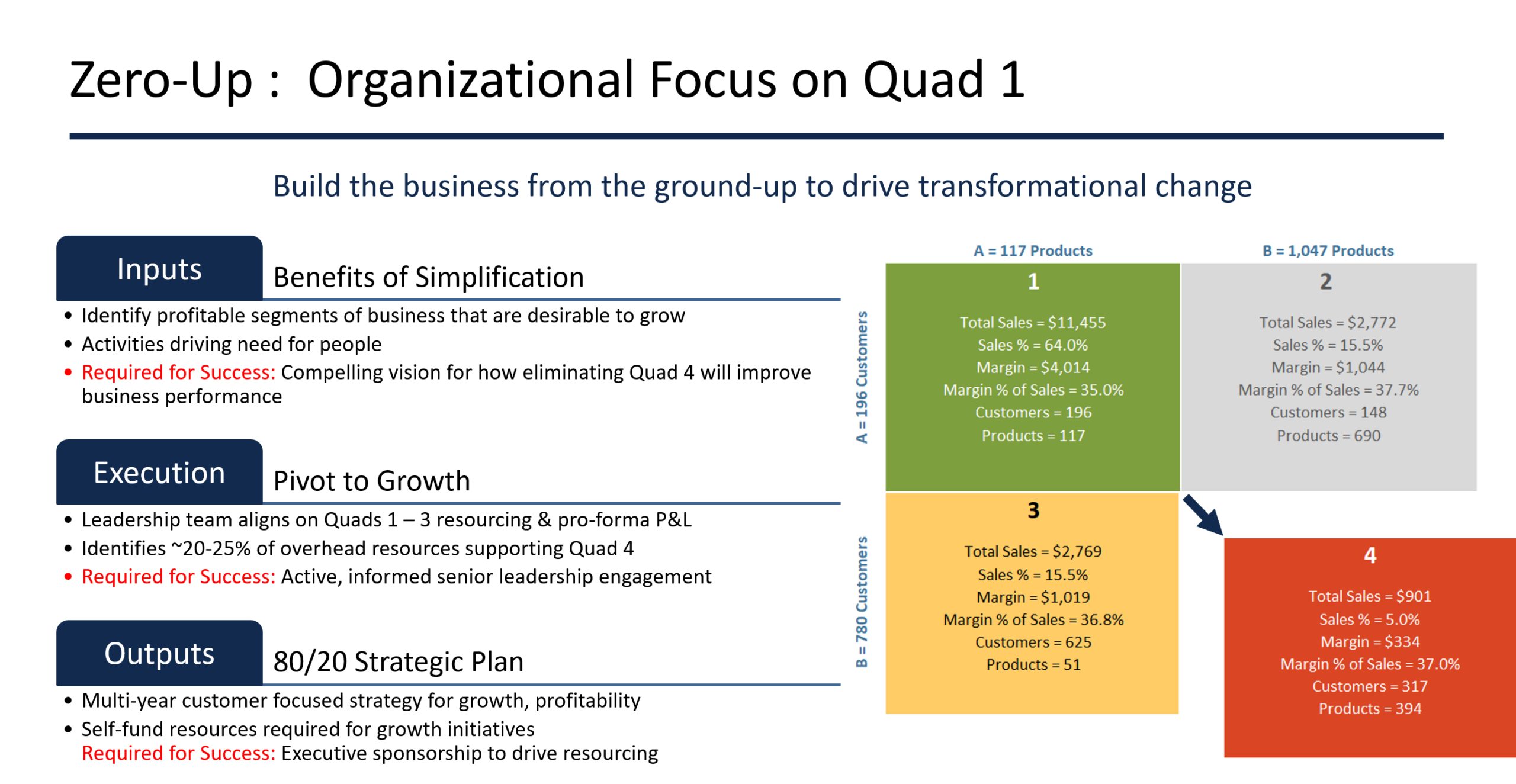The Zero-Up Process in a Nutshell
August 29, 2023

Zero-up has one goal and one goal only. It is to help you to establish or reestablish the business with the level of resources necessary to optimally serve the critical few. Achieving this goal means reducing or eliminating the trivial many and the disproportionate volume of resources it takes to serve low-performing customers and low-margin or no-margin products. In business, imbalance between outlays and income ranges from suboptimal to downright destructive. The more resources you devote to B customers and B products, the more destructive the imbalance. Diversion of resources to low-margin and no-margin customers and products squanders effort and assets. Even worse, it compromises the company’s capacity to serve high-performing customers. Fail to overperform for the 20 percent of your customers who produce 80 percent of your net sales, and you will lose them along with the ability to create or attract new A customers.

There is no quick fix for a business incapable of converting B customers into A customers. But the faster you productively refocus energy and resources on top-performing customers and products, the better your chances of turning the company around. Few businesses can afford to scrap everything and start from scratch. But a from-scratch turnaround can be made segment by segment. Prioritize one underperforming segment of the business and, in effect, start from scratch to balance it. Zero up in that segment to discover the minimum resources and costs required to run it minimally. This reveals the hidden costs of complexity while also exposing areas in which costs can be reduced or even removed. Budget for the coming month. Start with zero and add to it the individual costs of what is needed for the month. Take the resulting total of these outlays and compare it to the income from the month. If outlays exceed income, you have a choice. Subtract from your outlays or add to your income or do both. Next month, start from zero again, rinse, and repeat.
Zeroing up is harsh. It would be foolishly impractical to attempt to create a zero-base budget for the next three to five years, but working a month at a time, starting from scratch each month on given segment, is doable and will enable you to identify the assumptions that drive the segment. This will separate the needs from the wants. The needs are the high priority. The wants are optional, at least more or less. If it proves impossible to satisfy needs without incurring loss, the segment is beyond saving. Drop it.
